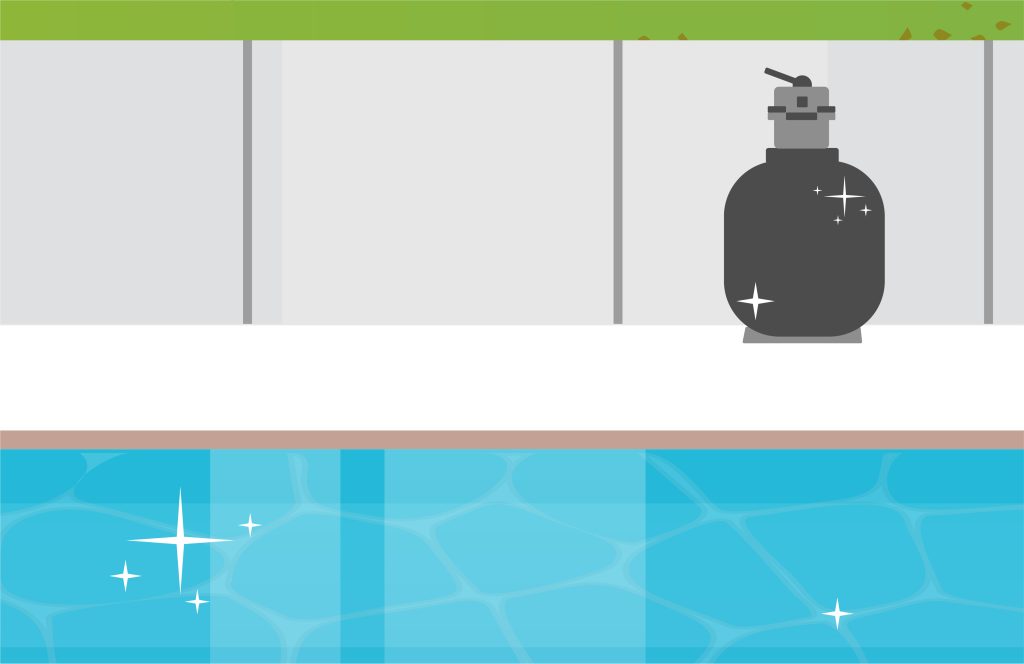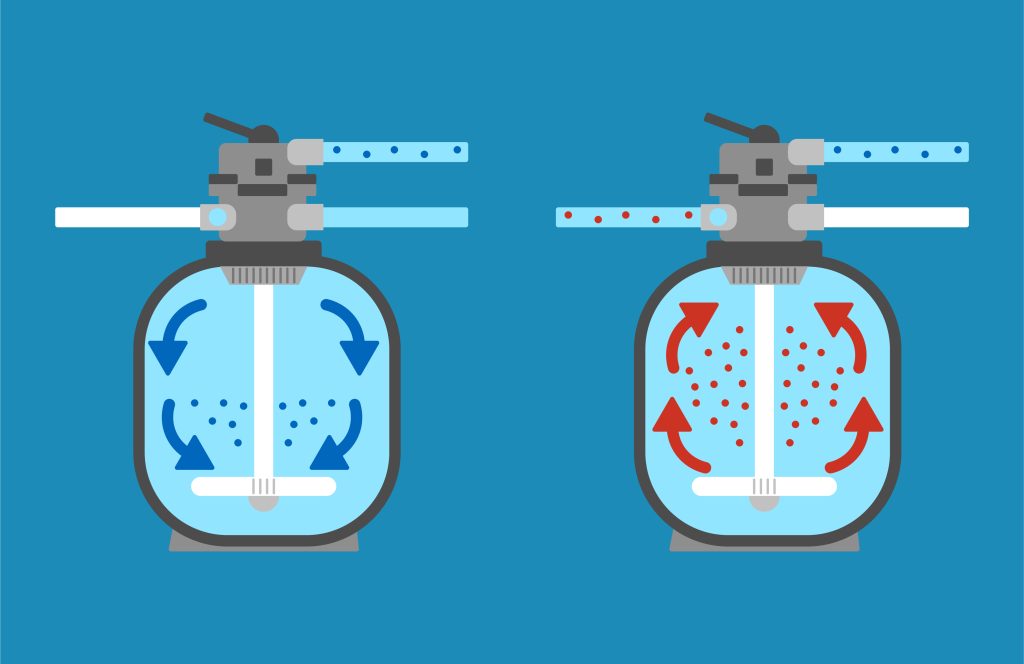Your pool filter cleans your pool — but what cleans the pool filter? Backwashing is a simple process that keeps your pool filter clean and functional. By backwashing your pool filter regularly, you won’t need to remove the filter to clean it manually, saving you time and effort.
It may not have the most sanitary name, but backwashing is one of the best ways to guarantee a sanitary pool. In this article, we’ll explain why backwashing should be on every pool owner’s to-do list.

What is backwashing and why should I do it?
While filters do a great job of removing dirt and debris from your pool, small particles can still get stuck in the filter medium. Over time, the filter medium can get clogged, preventing your filter from working effectively.
Backwashing is the process of sending water backwards through the filter and out the drain port. This will dislodge all the debris that moved into the filter from the opposite direction.
Think of it like a kitchen sieve — when food waste gets stuck in the pores, the most effective way to clean it is to flip the sieve over and push water through the other side.
How often should you backwash your pool filter?
We recommend backwashing your filter at least once a fortnight. However, you might need to backwash your filter more regularly if your pool has seen particularly frequent use. In any case, the best time to backwash is immediately after vacuuming your pool. If you vacuum your pool regularly, you may not need to backwash as often.
So while the frequency of backwashing may not be an exact science, there are some indicators that will tell you it’s time to backwash your pool. The most telling one’s if your sand filter system’s pressure gauge is exceeding 80Kpa. This is because pressure rises as the filter gets clogged up, and 80Kpa is beyond usual levels.

How to backwash a sand filter
The two most common types of filters are sand filters and D.E. (diatomaceous earth) filters.
A typical sand filter uses multiple ports to control the flow of water, and will use sand as a barrier to block debris, dirt and oil. However, over time, the sand can become clogged by these contaminants and reduce its ability to filter.
Follow these steps to backwash your sand filter:
- Attach the backwash hose to the waste port
- Turn off the filter system
- Turn the multiport valve to the ‘backwash’ setting
- Turn the filter system back on
- Allow the hose to run the water for around one minute, or until the water runs clear.
- Turn off the filter system
- Turn the multiport valve to the ‘rinse’ setting
- Turn the filter system back on
- Rinse the filter for around 30 seconds
- Turn the filter system off
- Turn the multiport valve to the ‘filter’ setting
How to backwash a D.E filter
Diatomaceous Earth (DE) is a white powder made of diatoms, which are pulverised plankton fossils. This powder coats the filter to help filter out fine particles.
Follow these steps to backwash your D.E filter:
- Turn off the filter system
- Connect the backwash hose to the filter’s waste port
- Turn the multiport valve to the ‘backwash’ setting
- Turn the filter system on. Let it run for around two minutes.
- Turn the filter system off
- Turn the multiport valve to the ‘rinse’ setting
- Turn the system back on and let it run for around a minute
- Turn the filter system off
- Turn the multiport valve back to the ‘filter’ setting
- Add D.E powder to the filter (refer back to the filter manual to find how much powder you should add)
- Prime the pool pump
- Remove the strainer basket lid
Aqua Blue Pools is South Carolina’s leading pool builder. For over 25 years, Aqua Blue Pools have been creating custom pools and serving them with expert maintenance. We know what it takes to keep your pool clean and functional all year round.
Contact our team today for help and advice with maintaining your pool.


